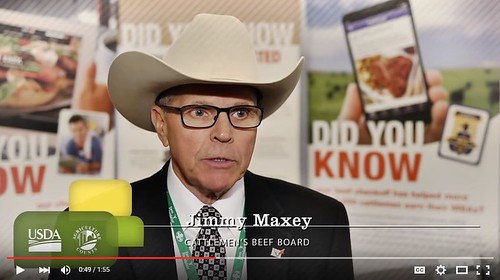
March is National Nutrition Month. Throughout the month, USDA will be highlighting results of our efforts to improve access to safe, healthy food for all Americans and supporting the health of our next generation.
During National Ag Week we collectively celebrate the food, feed and fiber that U.S. farmers and ranchers provide every day. Agriculture now and in the future relies on accurate, timely and useful information. My agency is charged with gathering information from farmers, ranchers and others involved in agriculture. We ask for information on a wide variety of topics such as prices, farmland value and availability, sales, age and experience of producers, and where the food on MyPlate is raised. We in turn provide with great pride and gravity the critical public data that are necessary for making informed decisions in business, policy and research.
More often now than in the past, producers are asking why they should provide their information. To start to explain this, representatives of agricultural organizations who work for producers explain how they use NASS data, why they use NASS data and why farmers should respond to NASS surveys. Earlier, producers themselves and others in the Ag industry shared their stories about using NASS data. Together, they really start to highlight the value and importance of the information farmers and ranchers provide for us to produce official U.S. statistics on agriculture.
We often say the data are used for policymaking. What does this really mean to producers? Let me share just a few examples. USDA agencies use NASS data to assist in the administration of the crop insurance program, including the recent expansion of options for organic growers, and are critical the Agricultural Risk Coverage (ARC) and the Price Loss Coverage (PLC) programs. Most recently, new data collection on honey bee colony loss, local food marketing practices, produce post-harvest food safety practices keep data current with changes in agriculture and policy needs.
Additionally, survey data are used for determining Conservation Reserve Program rental payments; committee representation that is reflective of the diversity of production and producers; new and beginner farmer programs; loan rates; research priorities to advance agriculture; establishing disaster loss values; and for generally promoting agriculture. All of these efforts benefit producers. Accurate and sufficient responses to NASS surveys ensure that these programs and many others are developed using the best information, directly from the source – our American farmers and ranchers.
As people across the country draw attention to the greatness of American agriculture during Ag Week and throughout the year, I bet they are using a lot of official U.S. data from NASS. Please join us in always doing three things to make sure these data are the best they can be: 1. Thank our farmers and ranchers for providing the information that make important data available, 2. Let them know how you use agriculture data and why it is so important to you; and 3. Ask them to continue providing their information through NASS surveys.
